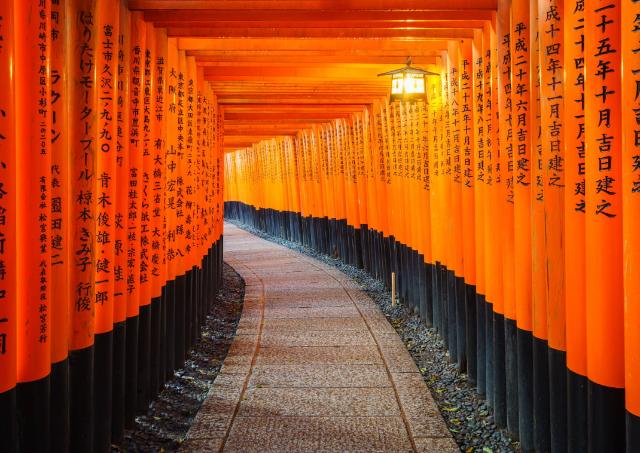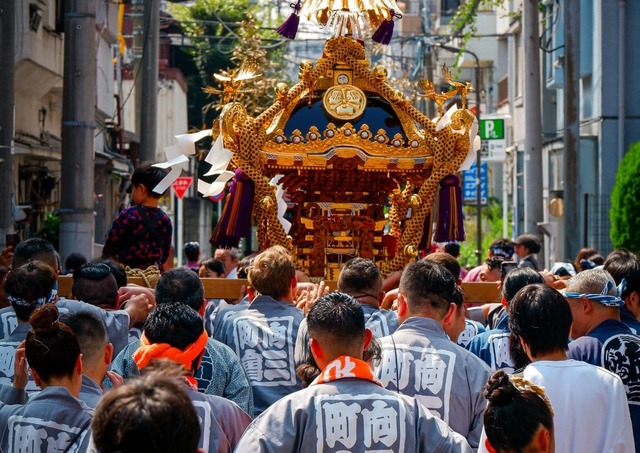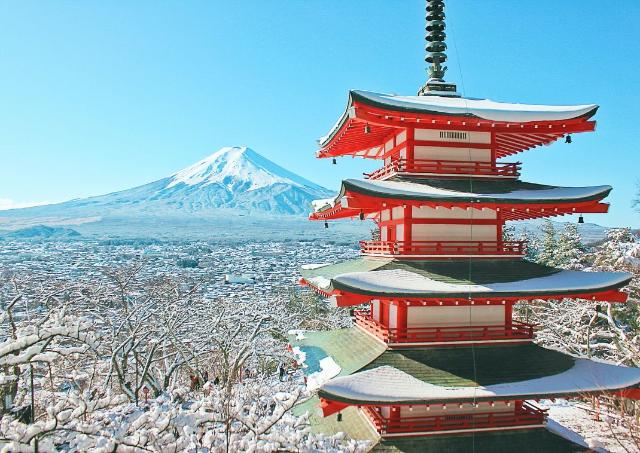Nikko: An Autumn Paradise Close to Tokyo
One of the great things about Nikko is that it’s very easily accessible from Tokyo, taking only around two hours to reach by train. This makes it a good day trip or overnight option when you want a taste of Japan’s country life while keeping the capital as your base. Here we will take a look at what to expect out of a trip to beautiful Nikko.
Nikko’s Cultural Side
One big reason that tourists find Nikko so attractive is its interesting culture. The most iconic image of the area is the red Shinkyo Bridge against the vibrant red and orange autumn leaves. You can pay a small entrance fee to go and take your picture on it, or take the iconic photo with the trees in the background for free.
Once you’ve admired the bridge, you only have to cross the road to find a whole collection of temples and shrines to explore. There you’ll find the Rinnoji Temple, Nikko Toshogu, and Nikko Futarasan Jinja, as well as the elaborate five-storied pagoda. Nikko Toshogu is the most ornate, and one of its buildings is famous for its design featuring the “see no evil, speak no evil and hear no evil” monkeys.
About a 30-minute walk from Shinkyo Bridge, there is also the Kanmangafuchi Abyss. It has an atmospheric walking trail, but is mainly known for its line of “Ojizo” statues. The statues are said to be guardians protecting children and travellers, and there are 70 of them – though legend has it the number changes every time you try to count them! In autumn, the area is sometimes shrouded in a mist that gives it an extra mystical atmosphere.
There are also plenty of other interesting cultural spots in the area, such as Edo Wonderland near Kinugawa Onsen, and of course the various onsen hot springs there.
Nikko’s Natural Side
Already we have had a glimpse of Nikko’s natural side with the Ojizo statues, as they are located in a scenic gorge that makes for a memorable walk. But Nikko has a whole host of other interesting natural spots to explore.
Nikko is home to three main mountains, Mt. Nantai, Mt. Nyoho, and Mt. Taro. Each has hiking trails up the mountain and is surrounded by other natural features and lowland walking trails. Waterfalls make up a significant part of those natural features, with the most famous being the impressive Kegon Waterfall.
Kegon Waterfall is just off Lake Chuzenji, Nikko’s largest lake, which sits at the foot of Mt. Nantai. It’s a particularly popular spot in autumn as the reds and oranges decorate the scenery around the water. There are also nice walking trails around the lake which are perfect to visit in autumn as the weather is not too hot or too cold.
Nikko’s Gourmet and Shopping Side
While Nikko is by no means a shopper’s paradise, there are plenty of small, family-run shops and restaurants to be found.
Most of the shops and restaurants are concentrated around Nikko Station. Nikko is most well-known for its “yuba”, a product made from boiling soy milk to create a delicate tofu sheet. Yuba is mild and slightly sweet and is used in a variety of local dishes in the area. You can find it in everything from rice balls to ramen. But probably the first place you will come across it is right outside the station, in the form of fried yuba-manju (a soft bun)!
Of course, there are plenty of other interesting places that don’t involve yuba, such as cute cafes, gyoza dumpling spots, and a delicious restaurant called Bar de Nikko that serves omurice – rice topped with omelette and a rich sauce.
As for shops, there are various souvenir shops near the station and on the road leading up to Shinkyo Bridge, including Dragon Art Kousyyuya, which creates dragons using a traditional “one-stroke” brush technique with ink. You’ll also find souvenir shops near the major sightseeing spots, and small charms can be bought at the shrines.
The shops and restaurants do have irregular opening hours, especially in the off-peak seasons, so make sure to check the times before visiting. It may also be a good idea to reserve restaurants in the evening.
Practical Information
At this point you’re probably pretty excited to visit Nikko, so how easy is it to fit into your itinerary?
From Tokyo Station, it can take under two hours to reach Nikko by taking the Shinkansen to Utsunomiya Station and then changing to the Nikko Line to Nikko Station. Otherwise, you can make your way to Tokyo’s Kita-Senju Station and take the non-stop Limited Express to Tobu-Nikko Station. If you start early, that will give you enough time to explore the Shinkyo Bridge, shrines and temples, and perhaps even the Ojizo statues. Then you can return back to your accommodation in Tokyo.
However, if you want to visit places further out from Nikko Station, such as Edo Wonderland or Lake Chuzenji, you might be better off spending a night or two in the area. Kinugawa Onsen Station is a good place to find cheaper accommodation, though is easiest to visit if you rent a car. Staying close to Nikko Station may make it easier to visit certain spots, but is usually more expensive and booked up, especially in autumn. Make sure to research accommodation ahead of time.
Looking for More Beautiful Scenery?
Nikko is certainly a beautiful place to visit in autumn, but what if you’re planning a trip earlier in the year? In that case, you might want to look for the charming purple wisteria that take over Kawachi in late spring.




